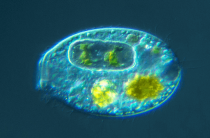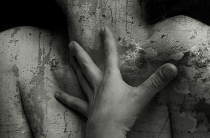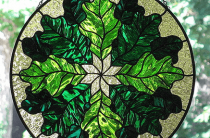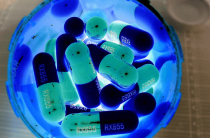All girls and women constantly strive to embellish the seed with something, then decide to make an extraordinary hairstyle, then put on unusual clothes, make themselves a bright make-up. Recently, the fair sex has begun to pay a lot of attention to their nails, and this is natural, because women should have well-groomed hands and a manicure. Now very common is the coloring of nails with gel polish.
This color scheme has a number of advantages. Let's say nails look bright for about twenty-one days. Gel polish does not allow water, household chemicals to wash it off. Note that this popular staining method often leads to such a negative consequence as an allergy to gel polish. Therefore, today we will talk about what to do if such a problem arises, how to treat the disease, what are the causes of the disease, what are the signs of an allergy to shellac, and we will also consider many other important issues.
Main symptoms
All signs of the disease are quite easy to determine.
Remember, for an accurate diagnosis, you should go to an appointment with a dermatologist or an allergist. The sooner you undergo an examination by a specialist, the faster your hands will regain their former beauty. When the master applies gel polish, this substance comes into contact with:
- finger pads;
- platinum, nail roller;
- cuticle.
Therefore, it is not surprising that lovely ladies begin to complain about the discomfort in the areas just listed. Among the main features are:
- swelling that is observed on the fingertips, in the area of \u200b\u200bthe nail roller;
- feeling of itching;
- rash.
The rash may appear as vesicles or as a colorless liquid. In addition, small pimples will appear.
Allergy Features
Severe itching is one of the main symptoms that manifests an allergy to gel polish. It often causes scratching of the resulting blisters. As a result, the skin covers come off, and erosive weeping formations are found under them. At this stage of the course of the disease, there is a high probability of attachment, the development of a secondary infection. Note that it can only aggravate the condition.
When the healing process takes place, you can see how small cracks, crusts form on the fingertips. They usually take a long time to heal. In rare cases, girls encounter such a problem as detachment of the nail plate. Perhaps such a change occurs because at first the nail layer is removed when gel polish is applied. For this reason, it will not be difficult for various chemicals to be under the nail.
Immunity, psychological state
I would like to note that an allergy to shellac can pass to the wrists of the fair sex, to their palms, if during the procedure the women's immunity was very weakened or they suffered any emotional upheaval, stress. In such a situation, allergies can manifest as blisters, blisters, like hives. By the way, after they heal, in most cases dark spots remain.
Remember, only a laboratory test, a timely trip to the doctor, will help start the right treatment on time. Note that gel polish contains methacrylate in its composition (almost all of these varnishes contain this component). Methacrylate can cause such an ailment as Quincke's edema. If some small particle of this chemical is on the mucous membrane of the nasopharynx, the possibility of edema leading to suffocation is not excluded.
Allergy to shellac: causes
All products that are used to cover nails with gel polish contain chemicals that can cause such an ailment as an allergy.
Among the main ones, formaldehyde derivatives, isobornyl methacrylate, are distinguished. This list is also supplemented by: rosin, used as the basis for coating with any color, toluene (it is an integral component of the solvent).
Note that allergies can disturb girls who use gel polish from various manufacturers. According to numerous surveys conducted among women, allergies most often occur on Chinese-made products. In addition, not only gel polish can be the cause of the disease. A risk factor is also the ultraviolet radiation required for the procedure itself.
Other risk factors
There is an opinion that an allergy can manifest itself on a sticky layer. Such a layer is applied on top of the varnish coating. If you do not follow all the rules for manicure, carry out the procedure inaccurately, a small amount of this product will be on the skin, causing irritation.
Also, allergies should not be a surprise if the master did not follow the rules for storing this cosmetic product. Freezing, direct exposure to the sun's rays, and other similar factors lead to a change in the chemical composition of the varnish. The influence of the so-called new chemical formula can affect the human body in different ways.
Allergy to gel polish manifests itself after the first procedure in rare cases. Most often, the first signs of the disease are noted after several months with regular visits to the manicure room, applying this coating. It is important to know that even correct, successful therapy is not a 100% guarantee of preventing the appearance of irritation on the skin after gel polish is reapplied.
Types of allergic reaction
During the procedure, the nail is under the action of the varnish, as well as the skin that is around it. This situation suggests the development of signs of the disease in this particular area. Simply put, this allergy is of a contact nature, almost never passes to other parts of the human body. Note that the general condition, well-being of the girl, of course, can worsen.
An allergic reaction of the contact type can develop in those representatives of the fair sex who come to the masters with a request to do a manicure. By the way, often the occurrence of allergies is observed in manicure masters. In this case, they may experience a number of signs of a respiratory nature. More precisely, the reaction occurs precisely to the smells of various products used during the work process. These symptoms include:
- sneezing
- tearing;
- swelling of the eyes;
- nasal congestion.
If contact with irritants for a long time, the condition will only worsen.
Features of treatment
If you are concerned about the symptoms only on the skin, there are suspicions that this is an allergy to gel polish, go to the master, tell him to remove the coating from the nails. With this method, you can not come into contact with the allergen.
When you note the symptoms characteristic of Quincke's edema, then immediate medical attention is indicated. Specialists are required to enter intravenously or intramuscularly anti-shock, antihistamines. Such drugs allow you to stop the development of allergies to stop the release of histamine in the future.
When the gel polish is removed, you need to urgently go to a dermatologist. He should try to establish the specific cause of the changes that the skin has to endure. Very similar symptoms are characteristic of other ailments, for example, for:
- eczema;
- scabies;
- fungal infections.
First, the doctor will prescribe the necessary examination, then prescribe the appropriate medications, tell you how to treat allergies, and what to do next.
Preparations
In case of an allergic reaction, antihistamine ointments, tablets (Diazolin, Suprastin) are usually prescribed. Corticosteroid ointments are also used. For example, Advantan, hydrocortisone ointment. Hyoxysone has a good effect. Such a drug is both a glucocorticosteroid and an antibiotic agent.
When the skin heals, Panthenol and Solcoseryl ointments come to the rescue. Doctors also prescribe enterosorbents - Enterosgel, Laktofiltrum, vitamin complexes. Self-medication is dangerous! Only a doctor should treat! Ask any questions to our specialist.















